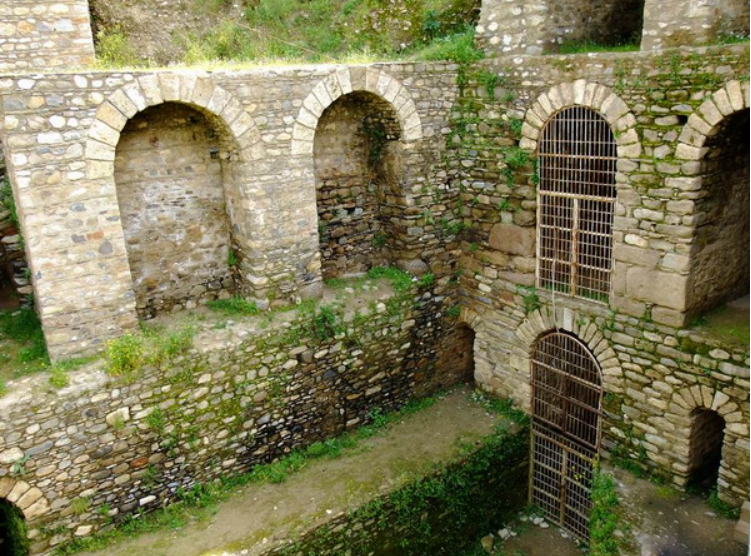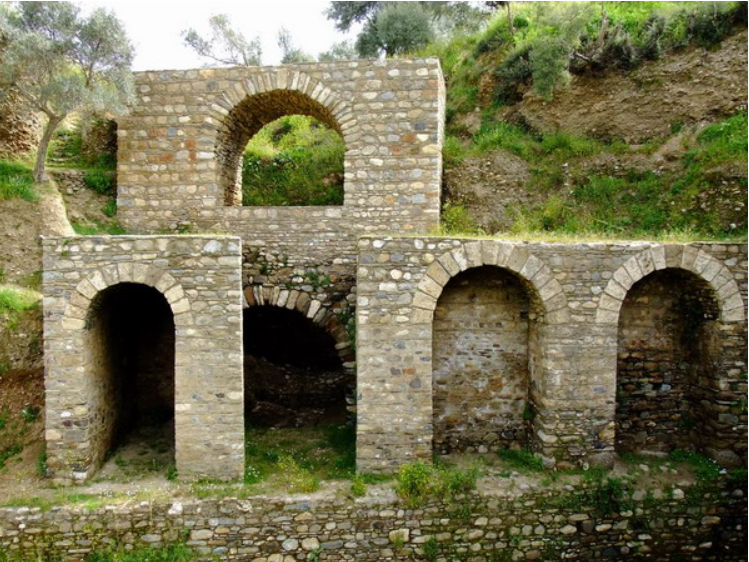Tralleis Ancient City is an ancient settlement located approximately one kilometer north of the city center of Türkiye, on a fertile plateau on the southern slopes of the Kestane Mountains (ancient Mesogis). The city is believed to have been founded by the Thracian Tralleis people and colonists from Argos. In ancient sources, it is referred to by various names such as Tralleis, Trallais, Tralla, Seleukeia, Antiochia, and Caesarea. Tralleis was an important center of production, trade, education, and art in antiquity, particularly known for its sculpture and the renowned artists it produced.

Tralleis Ancient City (Aydın Provincial Directorate of Culture and Tourism)
History
The foundation of Tralleis dates back to the 13th century BCE, following the Dorian migrations. The ancient city is mentioned in the works Anabasis and Hellenica by the Greek historian Xenophon. After the Persians ended the Lydian Kingdom, Tralleis was incorporated into the Persian Satrapy and later came under the rule of the Carian Satrapy. In 334 BCE, during Alexander the Great’s campaign in Anatolia, the city surrendered without resistance, along with Nysa and Magnesia. During the Diadochi period, Tralleis became part of the Seleucid Kingdom and was rebuilt by Antiochus I (280–261 BCE), who renamed it Seleukeia.
In the 3rd century BCE, Tralleis gained limited autonomy and minted its own bronze coins. With the Treaty of Apamea in 188 BCE, it came under Roman influence, and in 133 BCE, it was officially incorporated into the Roman Empire. During the Roman period, the city gained significance in terms of culture, commerce, and the arts. Between 27–24 BCE, a devastating earthquake struck the city, but it was rebuilt with the support of Emperor Augustus and was given the name Caesarea. During the reigns of Emperors Claudius and Caligula, the city stood out for its sculpture production.
In the Byzantine era, Tralleis became an important episcopal center. In the 13th century, it came under the rule of the Seljuks and was later incorporated into the Ottoman Empire. During these periods, the city's ancient significance diminished considerably.

Tralleis Ancient City (Aydın Provincial Directorate of Culture and Tourism)
Architectural Features
In antiquity, Tralleis had a strong defensive structure along with a well-developed trade and production infrastructure. The city was established on the flat areas of a high, trapezoid-shaped hill. The most prominent surviving structure is the gymnasium, commonly known by locals as the “Üç Gözler” (“Three Arches”). Dating back to the 2nd century CE, this building served as a center for education, culture, and sports activities, and also functioned as a bathhouse.

Tralleis Ancient City (Aydın Provincial Directorate of Culture and Tourism)
The city also contains the remains of a theater, agora, stadium, baths, fortifications, arsenal, latrines, tombs, residences and shops, a bishop’s palace, various temples (dedicated to Zeus Larasios, Asklepion, Nike, Dionysos, and Concordia), and a sculpture school. Ancient sources mention that a brick palace built during the Roman period served as the residence of the high priest of Zeus, Larasios.
The bath-gymnasium complex, one of the largest in Anatolia, spans an area of approximately 40,000 m². It includes a well-preserved pool with a capacity of 200 people. This structure played a significant role in the social, educational, and daily life of the city.
Restoration and Archaeological Studies
The first archaeological excavations in Tralleis began in 1888, led by Carl Humann and Wilhelm Dörpfeld. Subsequent excavations were carried out in the years 1899, 1902, 1980, 1996, and 2000. Today, the excavations are ongoing under the direction of Prof. Dr. Murat Çekilmez, a faculty member in the Department of Archaeology at the Faculty of Humanities and Social Sciences, Aydın Adnan Menderes University. Within the scope of the "Heritage for the Future" project conducted by the Ministry of Culture and Tourism, current efforts are particularly focused on the bath complex.
Art and Culture
In antiquity, Tralleis was a renowned center for sculpture and ceramic production. Famous sculptors such as Apollonios and Tauriskos were trained in this city. Another notable figure from Tralleis is Anthemius, one of the architects of the Hagia Sophia. Among the significant sculptures unearthed in Tralleis are the Farnese Bull, Ephebos (Young Athlete), a statue of Eros, a head of Aphrodite, and a nymph sculpture. These works are now exhibited in major museums such as the Aydın Archaeology Museum, Istanbul Archaeological Museums, Naples National Archaeological Museum, and the British Museum.
The funerary stele of Seikilos, who lived in Tralleis, bears the oldest known complete musical composition in history. This inscribed musical epitaph is currently on display at the National Museum of Denmark in Copenhagen.


